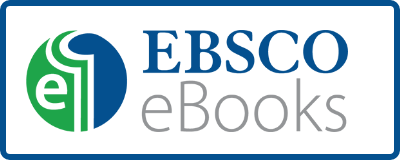BOOK SEARCH
Introduction to R&D Management ―Management of Technology―
ネット書店で購入する amazon e-hon 紀伊國屋書店 honto Honya Club Rakutenブックス
内容紹介
好評の『MOT研究開発マネジメント入門』を一部改訂のうえ英語化。コア技術の理解,市場の分析,最適な組織の構築など,経営の視点から研究開発の効率的なマネジメントを目指す。MOTを学ぶ留学生,海外の研究開発部門と連携する技術者およびマネージャーに最適のテキスト。
編集部から
目次
1. Technology Management and R&D Management
1. 1 What Is Management of Technology (MOT)?
1. 2 What Is R&D Strategy?
1. 2. 1 Strategy and Tactics
1. 2. 2 Strategic System Diagram
1. 2. 3 R&D Flow: Research, Development, Design and Fabrication/Manufacturing
1. 2. 4 The Essence of R&D Strategy
1. 2. 5 R&D in Intellectual Property
1. 3 What Is R&D Management?
1. 3. 1 Approach to R&D Management
1. 3. 2 R&D Organization
1. 3. 3 R&D and Innovation Management
1. 4 Three R&D Specifications Required for the Enterprise Model
1. 4. 1 Unique Challenges of the New DX Era Using AI, IoT & Big Data,and R&D Management
Session I Overview of R&D Management
2. R&D Management Methods
2. 1 Essential Flow of Business and R&D Management
2. 2 Economics of R&D Activities: Economies and Diseconomies of Scale
2. 3 R&D Generations and Design Models
2. 4 R&D to Create New Shared Value
2. 5 S-shaped Growth Curve of Technology and Product Life Cycle
3. Organization of R&D Management
3. 1 What Is Required for R&D Management
3. 2 Hierarchy from Organization to Product
3. 3 Five Generational Nature of R&D
3. 4 R&D Organization Theory
3. 5 Operation of the R&D Organization
3. 5. 1 Managing from the R&D Connection Perspective
3. 5. 2 Management of R&D Personnel from an Organizational Structure Perspective
3. 6 Competencies in R&D Management
4. Technology Development and R&D Strategy
4. 1 What Is Technology?
4. 2 Technology and Product Architecture
4. 3 Technology and Commoditization
4. 4 Technology and the Value Customers Want
4. 5 What is Technology Strategy?
4. 6 Correlation between Types of Technology Strategy and R&D Strategy
4. 6. 1 Relationship between Technology and Strategy
4. 6. 2 Technology Strategy Development Process (based on M. E.Porter’s method)
4. 6. 3 Resources in Technology Strategy
4. 6. 4 Technology Strategy in the Age of VUCA
4. 7 R&D Strategies by Industry
4. 7. 1 R&D Strategy for the Chemical Industry Sector: Central Glass Co.,Ltd.
4. 7. 2 R&D Strategy in the Drug Discovery Field: Daiichi SankyoCo., Ltd.
4. 7. 3 R&D Strategy in the IT Field: NTT DATA INSTITUTE OFMANAGEMENT CONSULTING, Inc.
Session II R&D Proposals and Practices
5. Technology Roadmapping
5. 1 What is the Age of VUCA?
5. 2 Forecasting Methodology
5. 3 Technology Roadmapping from Market Forecasts
5. 3. 1 Typical Examples of Technology Roadmaps
5. 3. 2 Methodology for Developing a Multi-Level Technology Roadmap
5. 3. 3 Clarification and Visualization of Priorities through Technology Quantification
5. 4 How to Collect Information for Creating a Technology Roadmap
5. 4. 1 General Information
5. 4. 2 Web Information
6. R&D Projects
6. 1 What to Consider Before Embarking on an R&D Project
6. 2 Structure of Revenue Logic
6. 3 R&D Activity Analysis
6. 4 R&D Strategy and Selection of R&D Themes
6. 5 Classification of R&D Themes and Tax Considerations
6. 5. 1 R&D Classification
6. 5. 2 Tax Breaks for R&D expenses (R&D Relief for Corporation Taxes)
6. 6 What Is R&D Productivity?
6. 7 Measures to Improve R&D Productivity
6. 8 Typical R&D Themes, Evaluation Timing, and Efforts not to Become a Mere Facade
6. 9 How toWrite a R&D Theme Proposal
6. 10 Prioritizing Against Goals
6. 11 High Value-Added R&D
6. 12 Progress Management of R&D Themes
7. Portfolio Management and Intellectual Property Strategy
7. 1 Visualizing Business Operations through Business Portfolios
7. 2 Development of Portfolio Management
7. 3 Improving the Efficiency of R&D management up to Commercialization
7. 4 Intellectual Property Strategy: Significance of Patent Application
7. 5 R&D Management from the Perspective of Intellectual Property
7. 5. 1 The Nature of Intellectual Property and R&D Attitudes
7. 5. 2 Patent Strategy from the Perspective of Patent Law
7. 5. 3 Considerations from Patent Information
7. 6 OODA Loop Methodology
7. 7 Fundamentals of Alliances and Legal Issues in R&D
7. 7. 1 Significance of Alliances
7. 7. 2 Forms of Alliances and What to Consider
7. 7. 3 Selecting Alliance Partners
7. 7. 4 Alliance Flow and Contracts
Session III Organization Building and Human Resource Development in R&D
8. The Essence of Creativity
8. 1 The Idea Funnel in Product Development
8. 2 Conception and R&D Theme
8. 3 Sources and Triggers of Ideas
8. 4 The Nature of Scientific Thinking
8. 5 The Importance of R&D Management for Concepts
8. 6 What is Creativity?
8. 7 Sticky Information
9. Organization and Human Resource Development in R&D Investment
9. 1 R&D Investment: Mobilization and Optimal Allocation of R&D Resources
9. 2 Decision Points for R&D Investment
9. 3 Strengthening R&D Organizational Capacity
9. 4 Human Resource Cultivation: Classical Theories of Motivation
9. 5 Motivation in R&D
10. R&D Finance
10. 1 Accounting
10. 2 Finance
10. 3 R&D Decisions Based on Market and Return on Investment Projections
10. 4 Estimating the Market Size (TAM)
11. Ethics for R&D Professionals
11. 1 What are Research Ethics?
11. 2 The State of Science and Technology, and R&D
11. 3 Research and Engineering Ethics Required for R&D Management
11. 4 The Shape of Ethics in R&D Management
Session IV Long-Term Vision for R&D
12. Innovation Management
12. 1 Innovation and Long-Term Strategy
12. 1. 1 Definition of Innovation
12. 1. 2 Theory of Disruptive Innovation
12. 1. 3 Jobs-to-be-done Theory of Innovation
12. 2 The State of Innovation Management
12. 3 Innovation Comparison: Open vs. Closed
12. 3. 1 Imec Model
12. 3. 2 DARPA Model
12. 4 Ideal Cycle for New Product Development Based on Innovation
12. 5 A NewWave of AI-Based Innovation
Index
At the Conclusions
Acknowledgments
About the Author
























